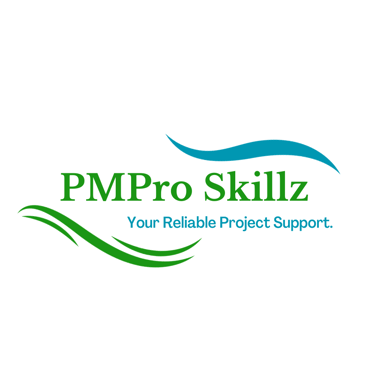How to Stop Overplanning and Actually Start Your Personal Project
Overplanning personal projects is a common trap - get proven tips on how to stop endless planning, focus on your MVP, and force yourself to take action by scheduling tasks, going public with your goals, and adopting a progress over perfection mindset. Learn how to finally move from idea to execution.
Iyanna Trimmingham
8/10/20237 min read


We've all been there - you have a great idea for a personal project. Maybe it's finally launching that side hustle, training for a marathon, or redoing your backyard landscaping. You feel motivated and inspired, ready to dive in and make it happen!
But then...the overplanning starts. You get caught up making endless to-do lists, researching all the options, over-analyzing every little detail. Before you know it, days or weeks have slipped by and you still haven't taken that critical first step to get started.
If this sounds familiar, you're not alone! Overplanning is extremely common with personal projects. Without firm deadlines and accountability, it's easy to get stuck in research and preparation mode indefinitely.
As a project manager, I've seen this pattern time and time again. So how do you break the cycle and finally start moving your personal project forward? Here are my top tips:
Tip #1: Define Your Minimum Viable Product (MVP)
I love the concept of the "minimum viable product" - the most basic version of your project that you can launch with. What is the essential core, stripped of all the bells and whistles?
Defining this MVP right away prevents you from over-complicating things as you plan. It helps you focus first on the absolute must-haves to get started.
For example, if your goal is to start a blog, your MVP could be:
Pick blog name and topic
Set up simple site on free blogging platform
Write and publish 3 posts
The MVP doesn't include fancy branding, monetization plans, social media - just the basics to get that first post up live.
Take time to thoughtfully define your minimum viable product. This clarity of focus is crucial.
Tip #2: Make Your Project Public
This may sound scary, but there's no better motivator than going public! Don't keep your project idea secret any longer. Tell close friends and family about it, share on social media, or join an online community of others interested in the same goal.
Making your intentions public generates some key momentum-building benefits:
Accountability: It's harder to procrastinate or give up when others are expecting updates on your progress. You'll want to have some wins to report.
Support: Getting input and encouragement from people who know you and want you to succeed can be invaluable during planning and execution.
Connections: You may connect with others working on similar projects, opening up idea-sharing and potential collaborations.
Look for relevant Facebook groups, Reddit communities, or Slack channels you can join to go public with your project. And consider recruiting a friend as an accountability partner to check in with regularly.
Tip #3: Set Short Timelines for Planning Tasks
My clients are always shocked when I set aggressive 6-8 week timeframes for planning major projects. They expect planning to take many months.
In reality, forced short timelines are extremely effective to prevent overplanning and drive faster results. Think about the famous Google Sprint methodology - they aim to solve big problems in just 5 days!
Use this rapid timeline approach for your own MVP planning. Give yourself no more than 1-2 weeks to complete tasks like:
Researching options
Selecting tools/platforms
Creating project charter
Setting up accounts
Imposing short time windows creates focus and urgency, stopping you from belaboring decisions or chasing perfection as you plan.
Use a technique like timeboxing to contain tasks to set durations. And move on once the time is up - even if the output isn't fully polished. Done is better than perfect!
Tip #4: Schedule Project Time Like Appointments
Treat project work time just like any important appointment or meeting - block off specific time slots for it in your calendar and protect that time.
Without dedicating and scheduling time, it's easy for project tasks to end up in the "I'll get to it later" bucket - and that time may never come.
Some key points for effective calendar scheduling:
Schedule 2-3 consistent time blocks per week for project work. More frequency is better for momentum.
Keep time chunks small and focused - start with 30-60 minutes. You can always extend as you get into flow.
Schedule your project time first before anything else. Treat it as high priority.
During the allotted times, eliminate distractions and focus solely on the project work.
Use calendar invites to send yourself reminders to start and notifications when time is up. This scheduling rigor brings structure and commitment.
Tip #5: Focus on Tangible Action Steps
In the early planning stages, it's easy to get bogged down in abstract big picture ideas. Shift the focus instead to tangible next steps.
Having concrete action steps you can take now - even if they are small - creates momentum and a sense of progress.
Here are some examples of tangible next steps for different goal types:
Side Business Project
Register business name
Set up business bank account
Build website landing page
Fitness Project
Buy workout shoes
Schedule gym orientation
Download workout tracker app
House Project
Interview 3 contractors
Visit showrooms to view options
Take final measurements
Prioritize identifying at least 1-2 specific, executable actions you can take toward your project this week. Then focus your time and energy there.
Tip #6: Impose a Rapid Prototyping Mindset
In product development, rapid prototypes are an essential early step - quickly building a lightweight sample or model to visualize the finished product before investing in the full build.
Adopting a rapid prototyping mindset is hugely helpful for personal projects too. Resist the urge for perfection right out of the gate.
Stay focused on roughing out an initial prototype, scoping out key elements so you can:
Get clearer on the end vision
Identify potential issues early
Refine the concept without over-investing upfront
Some examples of rapid prototypes for personal projects:
Drafting 1-2 sample blog posts before committing to the full site design
Doing a low-budget test rollout of a workshop concept before a bigger launch
Sketching initial designs before building out a full landscaping plan
Force yourself to put together some form of prototype ASAP. You'll gain critical insights from this test drive of your project.
Tip #7: Commit to a 45-Day Minimal Viable Attempt
This tactic used by productivity guru James Clear is so brilliantly simple and effective for overcoming start line paralysis.
Choose a start date and commit to working on your minimal viable product (MVP) for at least 45 days. That's it! No longer commitments.
Knowing there's just a short window lowers the stakes and the pressure for instant perfection. You can focus on making consistent progress versus obsessing over every detail.
If after 45 days, your enthusiasm fizzles out, you can walk away with no regrets. But chances are, you’ll build momentum and be excited to continue. Either way, you'll learn a ton in the process.
So set your date, put it on the calendar, and pledge to stick with it for 45 days no matter what. This constraint will work wonders.
Tip #8: Give Yourself Limited Planning Time Upfront
Parkinson's Law states that work expands to fill the time available. This applies in spades to personal project planning, where lack of concrete deadlines means you give yourself endless flexibility to plan “eventually.”
Combat this by imposing a strict time cap for upfront planning activities before you dive into doing. For example:
Research options for no more than 5 hours total before selecting your vendor/tools.
Limit planning meetings or consultations to 4 before settling on a direction.
Give yourself 1 week max to sketch/wireframe before building any materials.
These constraints prevent you from over-analyzing without making enough real progress. You can always re-plan and refine once you begin executing, informed by lessons from actual experience.
Be frugal with any non-action-oriented planning time. Pare things down to the essentials based on your MVP needs.
Tip #9: Conduct a Pre-Mortem Analysis
This exercise invented by Nobel laureate Daniel Kahneman is brilliant for mitigating overplanning tendencies.
Imagine it is months into the future and your project has failed or stalled. Write down all the hypothetical reasons why. Really get into the details - the more granular the better.
This thought experiment makes you confront potential flaws, risks, and blind spots in your project plan BEFORE you even start. It highlights where things may go wrong so you can course correct ahead of time.
You now have an opportunity to:
Build monitoring checkpoints around identified risks.
Add contingencies if certain scenarios arise.
Adjust your plan where it seems weakest or most uncertain.
No amount of planning guarantees success. But pre-mortem planning equips you to anticipate and adapt when reality deviates from the plan.
Tip #10: Balance Planning with Short Action Sprints
The most helpful planning is tightly integrated with action - define the next milestone, execute tasks to hit it, assess, and re-plan based on what you’ve learned.
Interweave short planning sprints with action sprints to move your project forward. For example:
Spend 2 days planning Phase 1 tasks and goals
Then execute intensely for 1 week
Regroup for 1 day to review and plan Phase 2
Repeat the cadence
This forces you to step away from the plan and bias toward doing. After each sprint, you can incorporate course corrections and new insights into the next level of planning.
Keep the doing timeframes tight and focused. Let the results guide your next direction, not theoretical planning.
Bonus Tip: Perfection is the Enemy of Progress
This is my mantra when it comes to personal projects. The allure of unattainable perfection is why we get stuck planning forever and never starting.
Your end vision is likely a moving target anyway. As you begin executing, you'll gain insights that change and refine the plan on the go.
Striving for excellence still matters. But don't let pressure for perfection prevent you from taking action at all.
Focus on consistent forward progress vs instant flawlessness. You can course-correct issues along the way. But you must start actually DOING the project to make real progress.
So set worries of missteps or "not good enough" aside. Aim for progress, not perfection, right out of the gate.
Now Go Make Some Progress!
The biggest hurdle with personal projects is simply starting - taking that critical first step beyond just planning to begin actively DOING.
I hope these tips give you the motivation and mindset to break the overplanning cycle for good. Commit to kicking off action on your MVP in the coming weeks.
Expect challenges and roadblocks along the way. But stay focused on tangible progress, not theoretical perfection. Maintain your momentum step-by-step.
You've got this! Now get out there, make some meaningful progress, and bring your passion project to life. I'm cheering you on.



